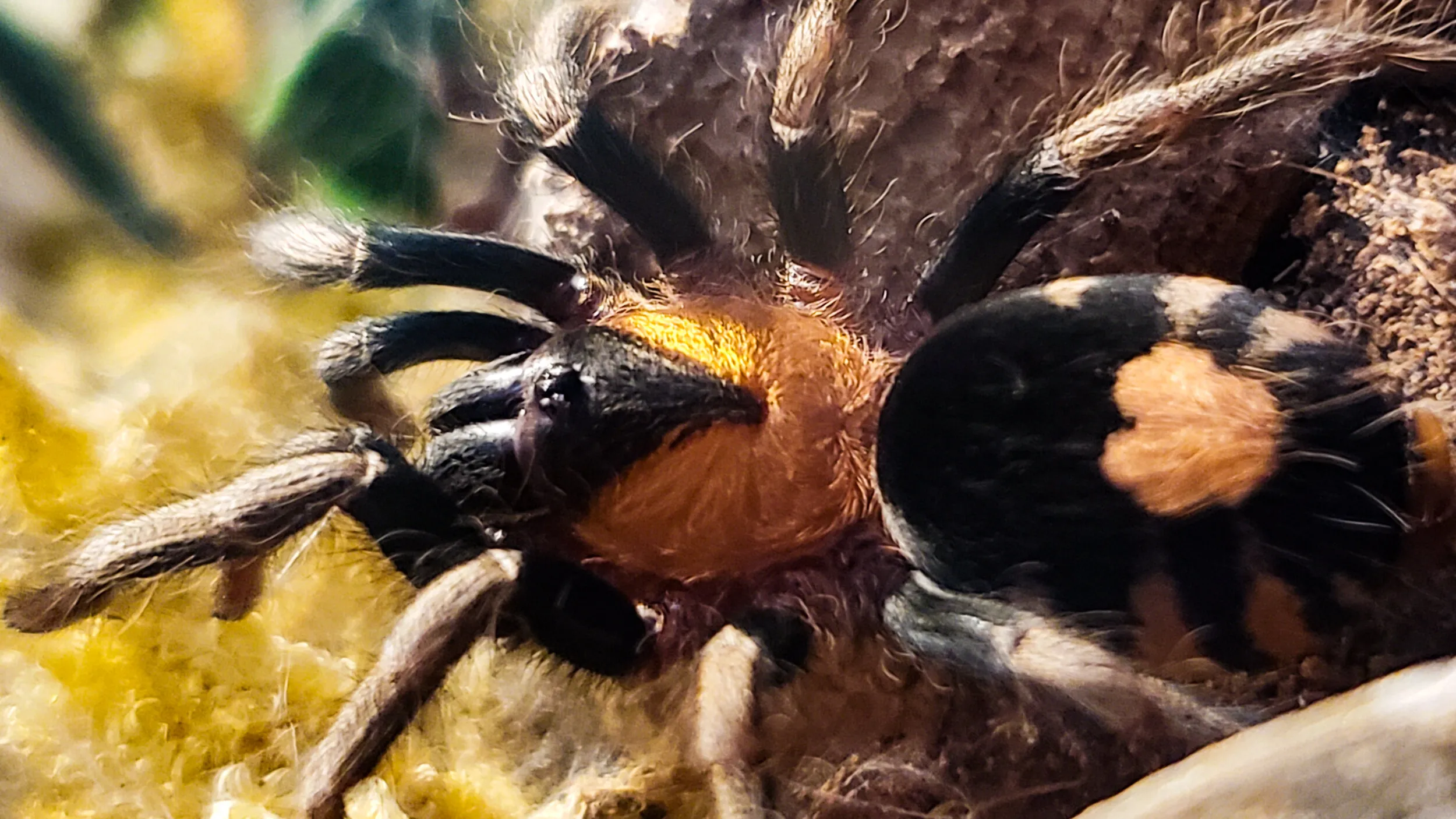Dwarf Tarantula Care Top 5 Tips
Dwarf tarantulas offer a fascinating glimpse into the world of arachnids, providing a rewarding experience for beginner and experienced keepers. These smaller arachnids are generally less demanding than their larger counterparts, making them an excellent choice for those new to tarantula keeping. With their captivating appearance and manageable care requirements, dwarf tarantulas have gained popularity as pets. This guide will focus on the essential aspects of dwarf tarantula care, ensuring the well-being of your pet and providing you with the knowledge needed to create a thriving environment. From housing and feeding to understanding their unique behaviors, this guide offers a comprehensive overview of everything you need to know to become a successful dwarf tarantula keeper. This ensures your tarantula lives a long and happy life, bringing enjoyment and education into your home.
Choosing Your Dwarf Tarantula
Selecting the right dwarf tarantula is the first crucial step in responsible pet ownership. The health and temperament of your tarantula largely depend on the species you choose. Researching different species of dwarf tarantulas is essential before acquiring one. The size, coloration, and behavior of each species can vary significantly. Some species are known for their docile nature, while others may be more defensive. Consider the space you have available for an enclosure, as some species may require more room than others. Also, reflect on your personal preferences. Do you prefer a terrestrial, arboreal, or fossorial species? Understanding these factors will help you make an informed decision and provide the best possible care for your new pet. By choosing the right species from the start, you’ll be setting yourself up for a positive and enjoyable experience in tarantula keeping.
Species Selection Considerations
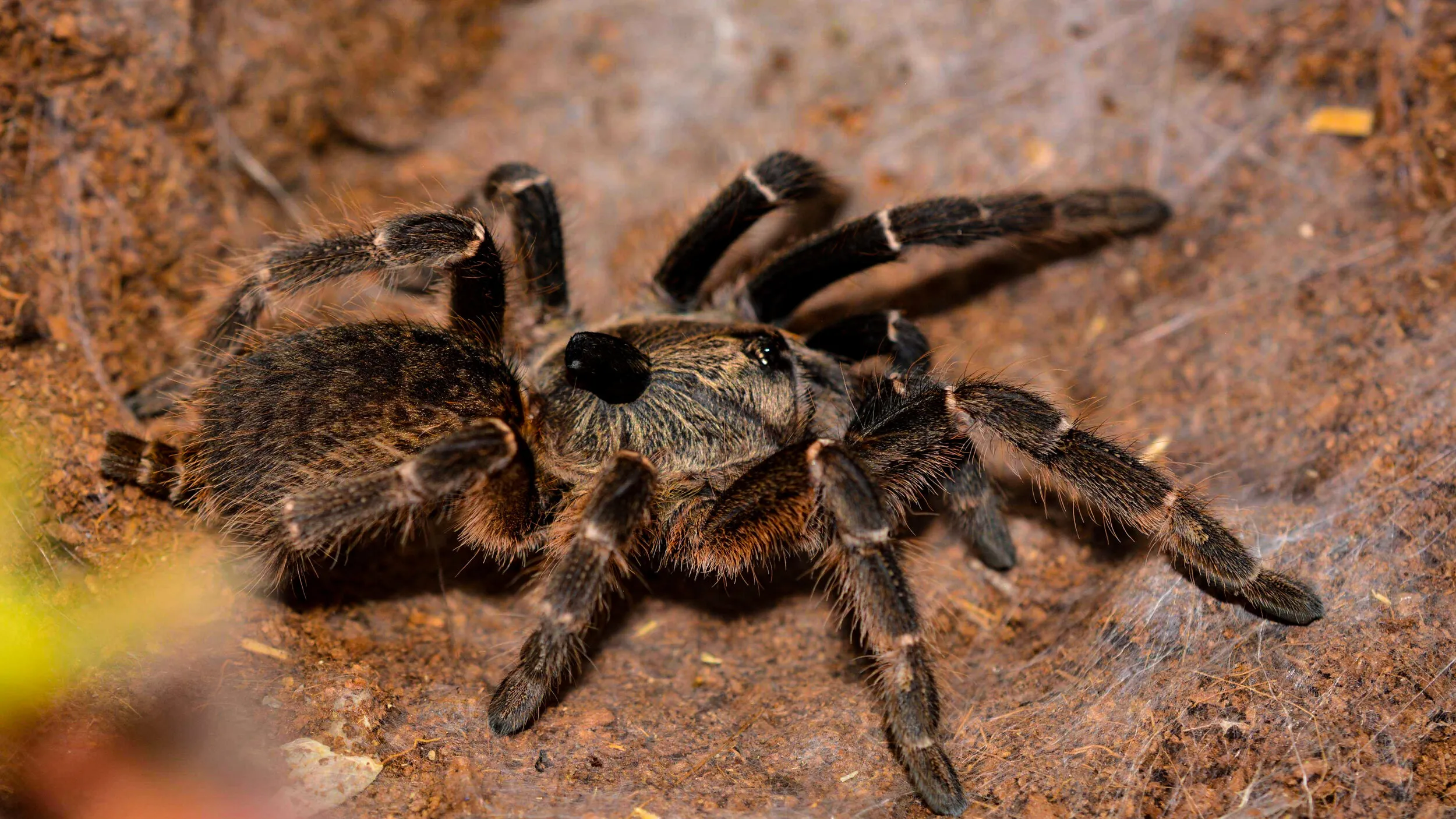
When choosing a dwarf tarantula species, carefully consider their unique characteristics. Research their natural habitat, as this will inform their specific needs. Some popular dwarf tarantula species include Cyriocosmus elegans, known for its striking appearance, and Holothele incei, appreciated for its relatively calm temperament. Understanding the adult size of the species is crucial for selecting an appropriate enclosure. Research the humidity and temperature requirements to ensure you can provide a suitable environment. Look into the feeding habits of the species, including the type and size of prey they require. Also, take into account the availability of the species, as some may be more difficult to find than others. Consider the lifespan of the species, as some dwarf tarantulas can live for several years. By taking these factors into account, you can make an informed choice that suits your experience level and lifestyle.
Temperament and Behavior
Dwarf tarantulas, like all tarantulas, have distinct temperaments and behaviors. Some species are known for their docile nature and are less likely to bite or display defensive behavior. Others may be more skittish or prone to flicking urticating hairs as a defense mechanism. It is essential to research the specific temperament of the species you are considering. Observe the tarantula’s behavior in the store or from the breeder. Look for signs of stress, such as rapid movements or a defensive posture. Understanding the tarantula’s behavior is essential for safe handling and a harmonious relationship. Avoid sudden movements and loud noises that may startle your tarantula. Learn to recognize the warning signs of stress and respect their space when necessary. By understanding their behavior, you can create a stress-free environment for your dwarf tarantula and foster a positive relationship.
Housing Your Dwarf Tarantula
Providing the proper housing is critical to the well-being of your dwarf tarantula. The enclosure should replicate their natural habitat, providing shelter, security, and the correct environmental conditions. The size and type of enclosure depend on the species and the size of your tarantula. A well-designed enclosure will not only provide a comfortable living space for your tarantula but also facilitate easy observation and maintenance. The right setup promotes natural behaviors, which helps keeps your tarantula stress-free. A proper enclosure reduces the risk of escapes. This part will focus on essential elements to set up a safe and comfortable home for your dwarf tarantula. The information provided will ensure you have all the basics covered to provide a comfortable habitat, promoting the health and longevity of your pet.
Enclosure Size and Setup
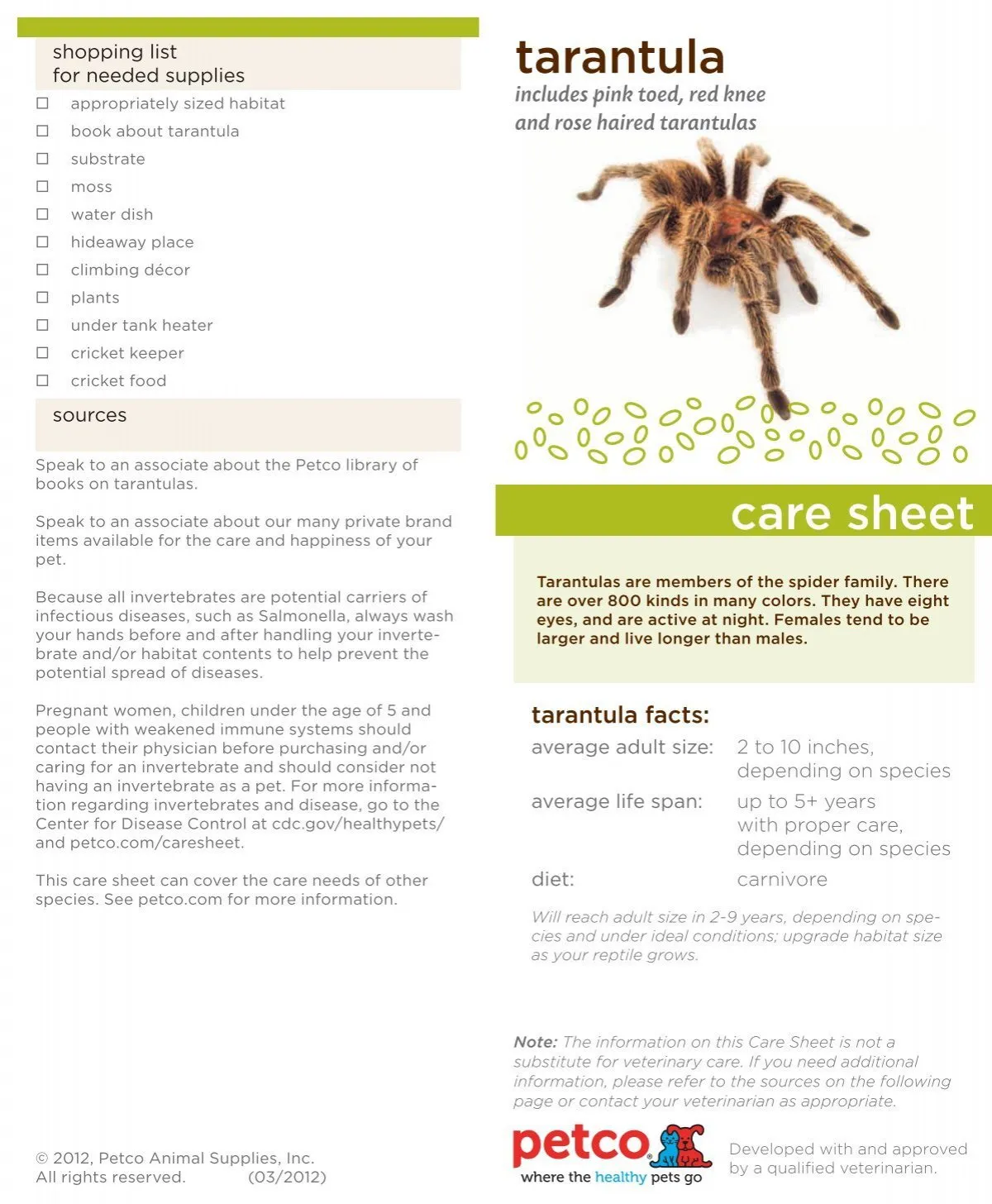
The size of the enclosure should correspond to the size and species of your dwarf tarantula. A general guideline is to provide an enclosure that is at least twice the leg span of your tarantula in width. Terrestrial species typically require more floor space, while arboreal species need more vertical space. A secure enclosure is essential to prevent escapes. Ensure the lid fits snugly and has adequate ventilation. The enclosure material should be transparent, such as glass or acrylic, for easy viewing. Set up the enclosure before introducing your tarantula. This provides a stable and safe environment. Include essential elements like substrate, hides, and water dishes. Consider adding decorations like branches, cork bark, or artificial plants to enrich the environment. A well-designed enclosure will provide your tarantula with a sense of security, promoting its well-being and natural behaviors.
Substrate and Decor
The substrate serves as the base of the enclosure and provides a comfortable and functional environment for your dwarf tarantula. The substrate should be able to retain humidity, allowing for molting and burrowing. Common substrates include coconut fiber, peat moss, and vermiculite. Avoid substrates with sharp edges. The depth of the substrate should be sufficient for the tarantula to burrow or hide. Provide a hide, such as a piece of cork bark or a half-log, to give your tarantula a secure place to retreat. Add decorations like artificial plants, rocks, or driftwood to enrich the environment. The decorations should not be sharp or pose any risk to the tarantula. Keep the substrate clean by removing any uneaten food or waste. This will help maintain a healthy environment. Proper substrate and décor offer a comfortable and stimulating environment for your dwarf tarantula, promoting natural behaviors and well-being.
Maintaining Humidity and Temperature
Maintaining the correct humidity and temperature levels is vital for the health of your dwarf tarantula. Most dwarf tarantulas thrive in a humidity level of 60-75%. You can measure humidity with a hygrometer. You can increase humidity by misting the enclosure with water or by providing a water dish. The temperature should be maintained between 75-85°F (24-29°C). Avoid placing the enclosure in direct sunlight or near heat sources. You can use a heat lamp or a heat pad to maintain the temperature. Monitor the temperature with a thermometer. Ensure proper ventilation to prevent the growth of mold or mildew. Regular monitoring and adjustments are critical to provide a comfortable environment for your dwarf tarantula. By ensuring the right humidity and temperature, you can support their health and well-being.
Feeding Your Dwarf Tarantula
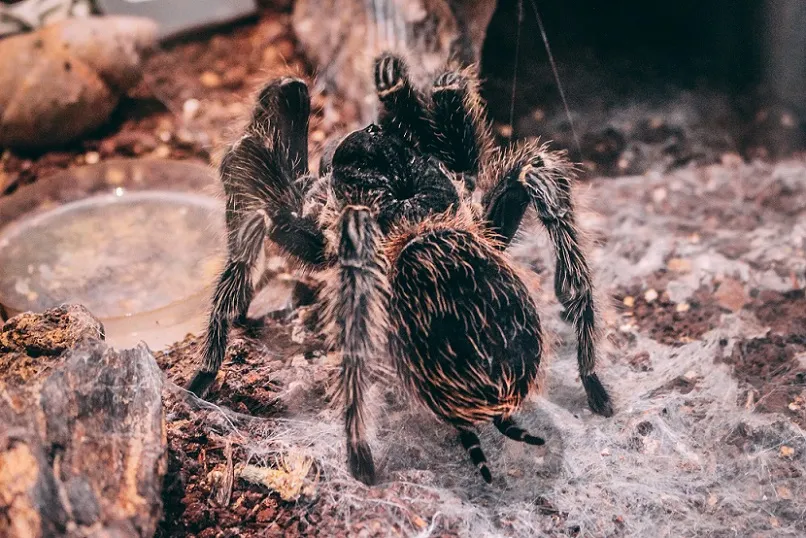
Feeding your dwarf tarantula is an essential aspect of their care. Providing the correct prey and feeding frequency ensures your tarantula remains healthy and well-nourished. The size and type of prey you choose should be appropriate for the size of your tarantula. Overfeeding can lead to health problems, and underfeeding can stunt their growth and energy levels. The feeding schedule should be based on the age and growth rate of your tarantula. Monitor their feeding habits and adjust accordingly. Understanding the nutritional needs of your dwarf tarantula is crucial to their overall health. This part will provide the information needed to feed your tarantula properly, from selecting appropriate prey to establishing a suitable feeding schedule.
Prey Selection and Feeding Frequency
The ideal prey for your dwarf tarantula includes appropriately sized insects. Crickets, mealworms, and roaches are commonly used and easily obtained. The size of the prey should be no larger than the tarantula’s body size. Feed juvenile tarantulas 2-3 times a week, while adults can be fed once a week or every other week. Remove any uneaten prey within 24 hours to prevent stress on the tarantula. Dust the prey with a calcium supplement to provide extra nutrients. Ensure your prey is also well-fed to provide the maximum nutritional value for your tarantula. Water should be available to the prey as well. Adjust the feeding frequency based on the tarantula’s growth rate and appetite. By providing the right prey and feeding frequency, you can ensure your dwarf tarantula receives the necessary nutrients for optimal health.
Water and Hydration
Providing a clean water source is crucial for the hydration of your dwarf tarantula. Always make sure there is a shallow water dish available. The water dish should be shallow enough to prevent drowning. Use a sponge or small pebbles in the water dish to prevent the tarantula from falling in. Change the water regularly to keep it clean. You can also mist the enclosure to provide extra moisture. Some tarantulas get hydration from their food, so the right size prey helps. Monitor your tarantula for signs of dehydration, such as a wrinkled abdomen. Providing adequate water is essential for their health and well-being. By following these practices, you can ensure your dwarf tarantula stays properly hydrated.
Molting and Growth
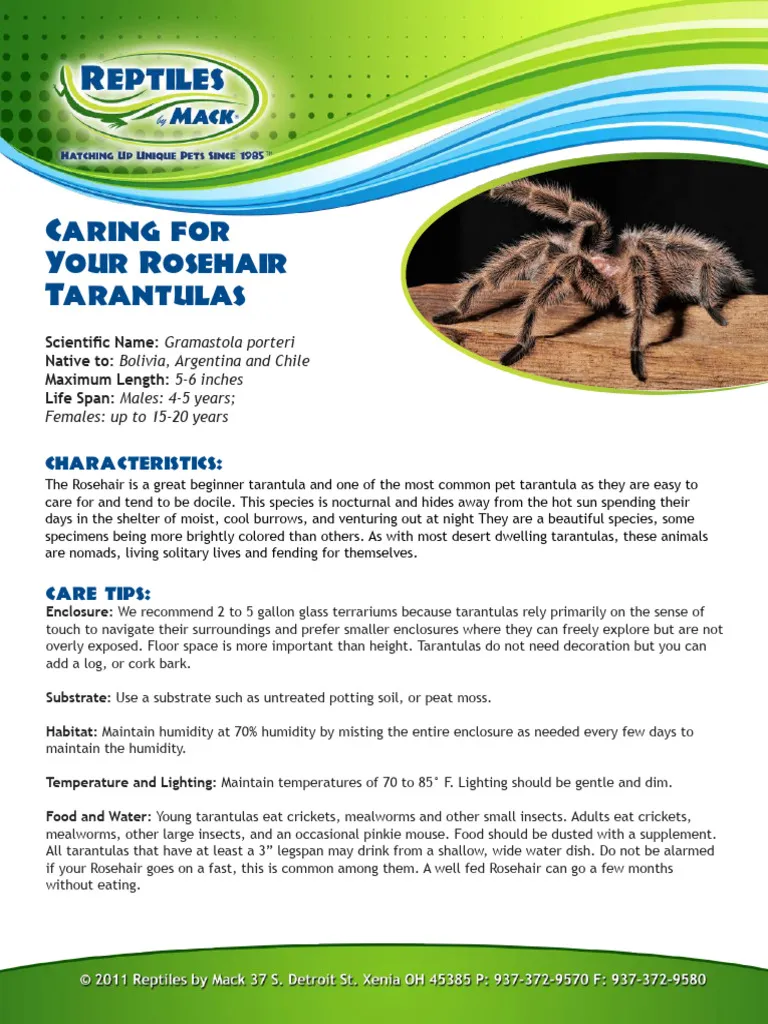
Molting is a natural process where tarantulas shed their exoskeleton to grow. This process can be stressful. Understanding the molting process and how to care for your tarantula during this time is crucial for its survival. Proper care during molting will increase your tarantula’s chance of a healthy molt. The molting process will affect the feeding schedule, humidity and overall care of your tarantula. Knowing what to expect during each stage of the molting process helps to avoid any problems. Be patient with your tarantula. This guide will help you know how to make sure that your tarantula safely goes through the molting process.
Recognizing the Molting Process
Recognizing the signs that your dwarf tarantula is about to molt is important. Tarantulas often stop eating before molting. They may become less active and seek shelter. You may see the tarantula lying on its back. The tarantula’s abdomen may appear darker or more swollen. The old exoskeleton may begin to separate. The tarantula might create a web mat to prepare for the molt. Providing a secure environment will help. Avoid disturbing your tarantula during this time. The molting process can take several hours or even days. Do not try to assist the tarantula during molting. Molting is a natural process, and intervention can cause harm. By observing these signs, you can recognize when your tarantula is molting.
Post-Molting Care
After molting, your dwarf tarantula will be vulnerable. Wait several days before feeding your tarantula. The tarantula’s fangs and exoskeleton will need time to harden. Provide a clean and secure environment to reduce the risk of injury. Increase the humidity slightly to aid the hardening process. The tarantula may appear a bit pale after molting. Do not be alarmed. Provide a water source and monitor your tarantula’s behavior. After the exoskeleton has hardened, the tarantula will resume its normal activities. Offering food after a week allows the tarantula to regain its strength. By providing proper post-molting care, you can ensure your tarantula’s recovery and continued growth.
Handling and Interaction

Handling dwarf tarantulas should be approached with caution. Most dwarf tarantulas are best observed from a distance. Regular handling is not necessary and can cause stress or injury to the tarantula. Safe handling requires knowledge of your tarantula’s behavior and temperament. Many species are skittish and fast. Understand that a bite from a tarantula can be painful, though not usually dangerous. Handling should be kept to a minimum and only when necessary. This section will provide guidance for safe handling practices. Following these guidelines will minimize risks and ensure the well-being of both you and your tarantula.
Safe Handling Practices
If you choose to handle your dwarf tarantula, prioritize safety. Always approach the tarantula calmly and slowly. Avoid sudden movements that might startle it. Handle the tarantula over a soft surface. Have a clear view of the tarantula’s behavior. Never handle a tarantula if you are unsure of its temperament. Always wash your hands before and after handling. Never attempt to handle a tarantula that is molting, feeding, or has a defensive posture. If the tarantula starts to flick hairs or raise its front legs, it’s a sign of stress, and you should put it back in its enclosure immediately. Safe handling reduces the risk of bites or injury to the tarantula. By taking these precautions, you can ensure a safe interaction.
Understanding Dwarf Tarantula Behavior
Understanding your dwarf tarantula’s behavior is critical for providing proper care. Observe your tarantula’s movements, posture, and feeding habits. Learn to recognize the signs of stress, such as defensive postures, rapid movements, or a loss of appetite. Tarantulas may also flick their urticating hairs as a defense. Understanding the tarantula’s natural behaviors, such as burrowing, web-spinning, or hiding, is important for a suitable environment. Knowing their behavior allows you to create a better habitat. Respect their space and avoid disturbing them unnecessarily. Observe the tarantula’s interaction with its environment. The information from observation can give you insight into its health and well-being. With a deeper understanding, you can provide better care and ensure a harmonious relationship.
Conclusion
Caring for a dwarf tarantula can be a rewarding experience. Dwarf tarantulas are generally hardy pets. They provide a unique opportunity to learn about arachnids. Success in tarantula keeping depends on your ability to provide proper care. This includes choosing the right species, setting up a suitable habitat, maintaining appropriate environmental conditions, and understanding their behavior. With consistent effort, you can create a thriving environment for your dwarf tarantula. Be patient and observant, and enjoy the fascinating world of these captivating creatures. The information provided in this guide will help you create a healthy and enriching environment for your dwarf tarantula. Enjoy the journey and the unique experience of keeping these amazing creatures.
